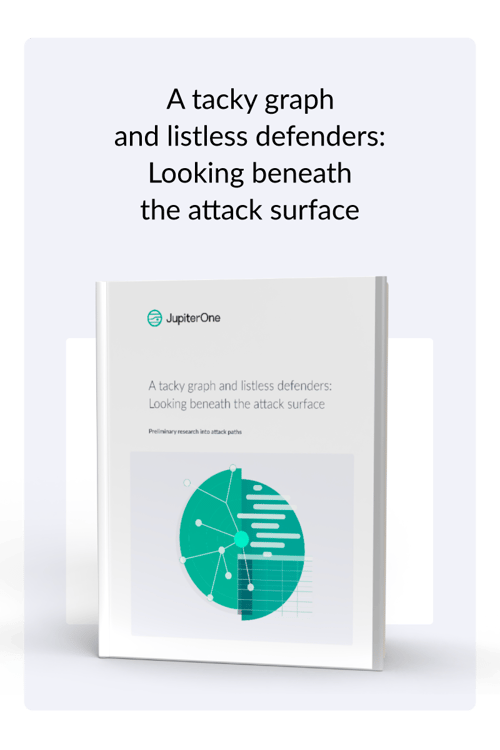Preliminary Research into Attack Paths
In this paper from the JupiterOne research and development and data science teams, we'll discuss the early findings from our ongoing attack surface research, pose open questions about the attack surface we should all be thinking about, and discuss specific use cases for using list or graph-based analysis.
John Lambert, a well-known, distinguished engineer at Microsoft, famously said, “Defenders think in lists. Attackers think in graphs. As long as this is true, attackers win.”
The difficulty with “thinking in graphs” is it’s an entirely new skill set to learn. On the other hand, attackers have it much easier. They simply need to steal credentials and try paths until they eventually find a high-value asset. This highlights the fact that defenders have to be right every time, while attackers only need to be right once.
List-based and graph-based analysis both have their use cases, and our research suggests that using a graph will become more necessary as attack surfaces continue to expand.
| How dynamic are attack surfaces and paths? | What do 880m triplets reveal about attack surfaces and paths? | What do connectivity and local and global risk exposure reveal about control coverage? |
Our research included analysis of:
